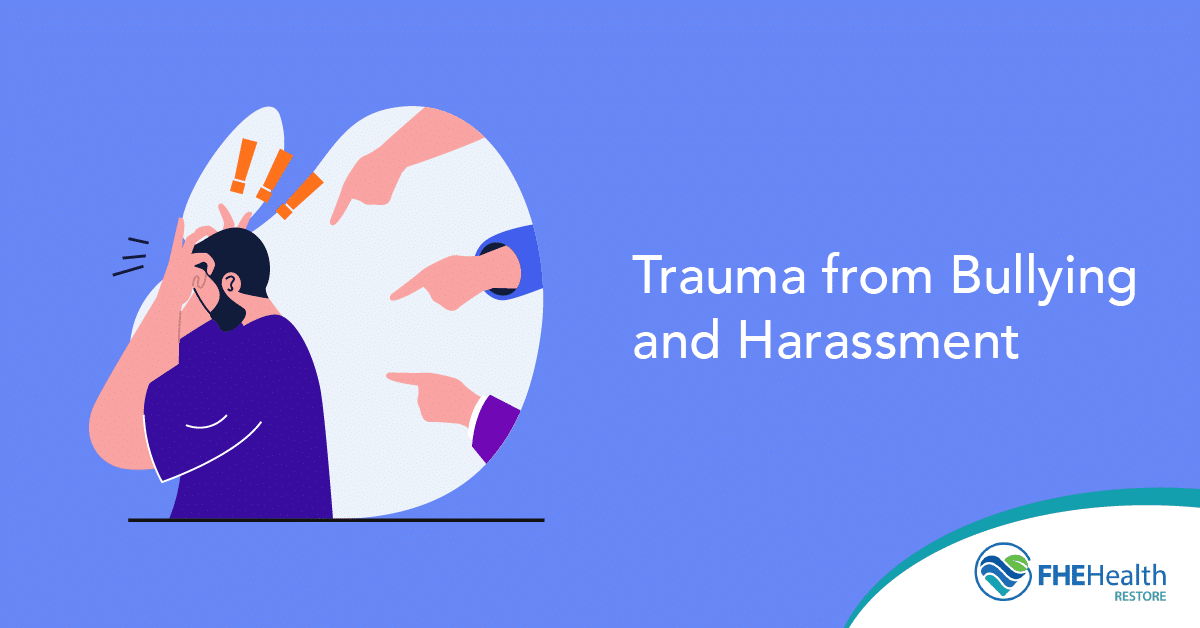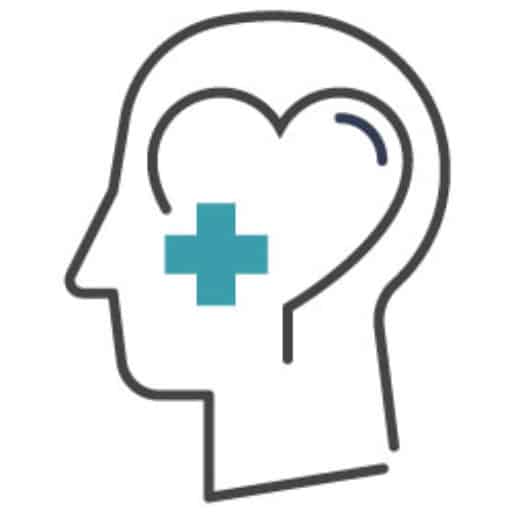For years, school bullying has been dismissed as “character building” or just part of the everyday growing-up experience. For victims of this type of harassment, the experience is much more than unpleasant. The trauma can last for years and alter a person’s mental health, self-esteem and ability to trust others. While the causes of bullying can vary greatly, its effect on victims often persists well into adulthood.
Do Bullying and Harassment Cause Trauma?
While previously viewed as trivial concerns, bullying and harassment are serious issues that are far too prevalent in society. Approximately 20% of students aged 12–18 have reported being bullied at school, according to the National Center for Education Statistics. These incidents rarely stay within school grounds. A recent Workplace Bullying Institute survey found that just under a third of the U.S. workforce experienced some sort of harassment at work. In 47% of cases, the bully had a higher rank within the company than their target.
Bullying and harassment are sometimes referred to interchangeably, but there are subtle differences between the two. While “bullying” refers to repeated harm-causing actions, “harassment” involves unwanted behavior meant to demean or intimidate. Both can and do cause significant emotional distress. They can manifest in various forms, including emotional bullying, physical aggression and cyberbullying. The rise of online social media has significantly expanded the former’s prevalence.
Trauma develops when the brain perceives these harmful experiences as threats. Over time, bullying and harassment can disrupt a person’s self-worth and may even cause the onset of mental health struggles, such as chronic stress and anxiety.
Possible Causes of Bullying
Repeatedly harming another person perceived as weaker is unacceptable. However, bullying and harassment are too prevalent to be dismissed with black-and-white thinking. Understanding there’s nuance to the behavior may help in prevention. Some potential reasons behind these types of aggression include:
- Unstable home environment. Children exposed to aggression, neglect or inconsistent discipline at home may repeat these behaviors in social settings.
- Peer pressure. Individuals may bully others to gain social acceptance or approval within their group despite feeling uncomfortable with their actions.
- Low self-esteem. In some cases, bullying is an individual’s way of projecting feelings of inadequacy onto others.
- Struggle to empathize with others. Individuals with limited emotional intelligence may fail to recognize the harm their actions cause.
- Systemic issues. Some schools or workplaces lack policies against bullying or rarely enforce them. Additionally, environments that normalize humiliation as “teasing” may inadvertently encourage such behaviors.
The Psychological Impact of Bullying
Experiencing constant hostility from peers affects all aspects of the victim’s life. Young victims often exhibit signs of low self-esteem and may develop mental health conditions such as anxiety and depression. Children who are bullied at school can feel isolated and that their situation is hopeless. Bullying can impair academic performance and social development, while adults might struggle with decreased productivity and job satisfaction.
Some victims resort to harmful coping strategies, such as self-harming and underage drinking or drug abuse. Severe bullying may result in symptoms resembling post-traumatic stress disorder, such as nightmares and emotional numbness.
The negative impact isn’t limited to victims. Exposure to bullying as witnesses may leave children feeling fearful about becoming targets themselves. This raises the child’s anxiety levels and can even trigger depressive symptoms.
Long-Term Effects on Mental Health
Bullying doesn’t necessarily end on graduation day, and the trauma doesn’t always disappear with time. For many survivors, the mental health repercussions persist long into adulthood. Individuals bullied as children are more likely to experience psychiatric disorders into adulthood. Lasting effects of these adverse experiences may include:
- Unhealthy coping mechanisms. To cope with trauma, some individuals may end up heavily reliant on alcohol or drugs.
- Difficulty building relationships. Bullying can make it challenging for survivors to build healthy relationships. They may constantly fear rejection or abandonment.
- Onset of mental health challenges. Survivors often remain on high alert, constantly expecting threats or criticisms. This hypervigilance leads to chronic anxiety and stress. It’s not uncommon for victims of school bullying to be diagnosed with PTSD and complex PTSD (c-PTSD) in adulthood.
PTSD caused by bullying and harassment can disrupt daily activities, affecting the individual’s quality of life. Long-term effects of PTSD also include physical health challenges, such as chronic pain, sleep disturbances and increased vulnerability to illnesses. Additionally, suffering from PTSD increases the risk of heart disease and gastrointestinal issues.
How to Cope and Heal from Trauma
The trauma a person experiences following adverse experiences, such as bullying and harassment, is far from trivial. There are proactive steps you can take toward recovery, such as:
- Validating your feelings. Often, the first step toward healing is acknowledging the experience and its impact. Trauma survivors frequently minimize their experiences, telling themselves it “wasn’t that bad.”
- Practicing self-care. Healthy coping skills, such as journaling, mindfulness meditation, exercise and creative hobbies, can reduce the emotional stress associated with bullying trauma.
- Building a support network. Surround yourself with trustworthy and empathetic friends and family members, or join a support group for people with similar struggles.
- Seeking mental health support. A therapist can diagnose trauma-related conditions and guide you through proven therapeutic approaches.
Effective Treatment Options
Survivors of bullying trauma can benefit from therapeutic interventions and structured support systems. As research on the topic grows, so do the treatment options available to help victims cope. Some evidence-based therapies you can opt for include:
- Talk therapies. Therapeutic approaches, such as cognitive behavioral therapy, help individuals identify and reframe negative thought patterns associated with trauma.
- Trauma-informed care. Mental health professionals trained in trauma-informed care use a holistic approach to help survivors come to terms with their trauma and regain control over their lives.
- Eye movement desensitization and reprocessing. EMDR therapy addresses trauma through structured eye movements, reducing distress and reprocessing traumatic memories.
Finding the Right Trauma-Informed Care
No one should carry the burden of bullying alone. If you or someone you care about is struggling with the effects of bullying or harassment, receiving proper care can make a difference. At Restore Mental Health, compassionate experts offer individualized support to help survivors reclaim their lives. Reach out to us today.



